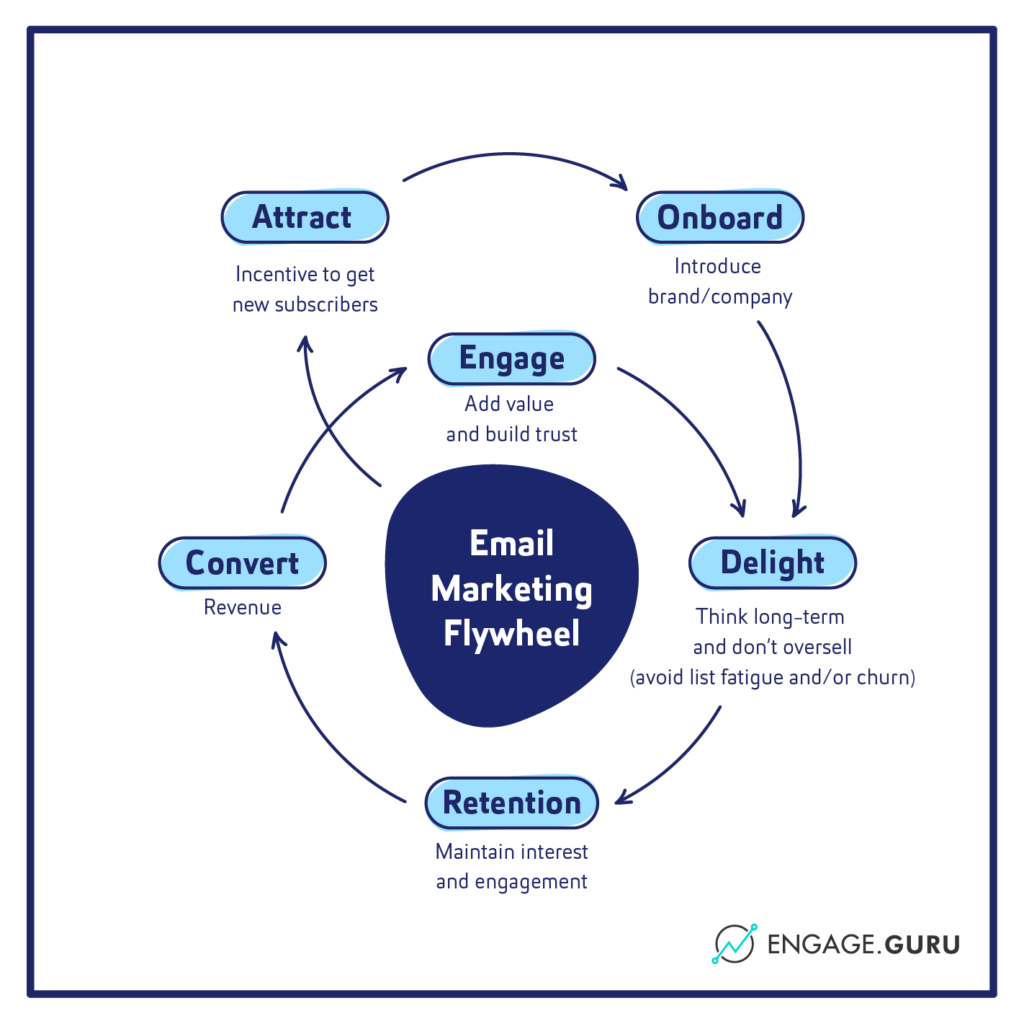Jim Collins, author of the classic business book “Good to Great“, has a concept he refers to as the Flywheel effect:
Picture a huge, heavy flywheel—a massive metal disk mounted horizontally on an axle, about 30 feet in diameter, 2 feet thick, and weighing about 5,000 pounds. Now imagine that your task is to get the flywheel rotating on the axle as fast and long as possible. Pushing with great effort, you get the flywheel to inch forward, moving almost imperceptibly at first. You keep pushing and, after two or three hours of persistent effort, you get the flywheel to complete one entire turn. You keep pushing, and the flywheel begins to move a bit faster, and with continued great effort, you move it around a second rotation. You keep pushing in a consistent direction. Three turns … four … five … six … the flywheel builds up speed … seven … eight … you keep pushing … nine … ten … it builds momentum … eleven … twelve … moving faster with each turn … twenty … thirty … fifty … a hundred.
Then, at some point—breakthrough! The momentum of the thing kicks in in your favor, hurling the flywheel forward, turn after turn … whoosh! … its own heavy weight working for you. You’re pushing no harder than during the first rotation, but the flywheel goes faster and faster. Each turn of the flywheel builds upon work done earlier, compounding your investment of effort. A thousand times faster, then ten thousand, then a hundred thousand. The huge heavy disk flies forward, with almost unstoppable momentum.
This got me thinking on how this flywheel effect as a concept can be applied to email marketing programs (because as an entrepreneur, running companies, I thought about this a bit differently…)
So here it is… the flywheel model for an email program:

- Attract – Incentive to get new subscribers
- Onboard – Introduce brand/company
- Engage – Add value and build trust
- Delight – Think long-term and don’t oversell (avoid list fatigue and/or churn)
- Retention – Maintain interest and engagement
- Convert = Revenue
By following this flywheel model, momentum begins to compound, and over time you have a comprehensive list of eager subscribers that continue to engage and convert into revenue.
Now that’s a solid email marketing program.
